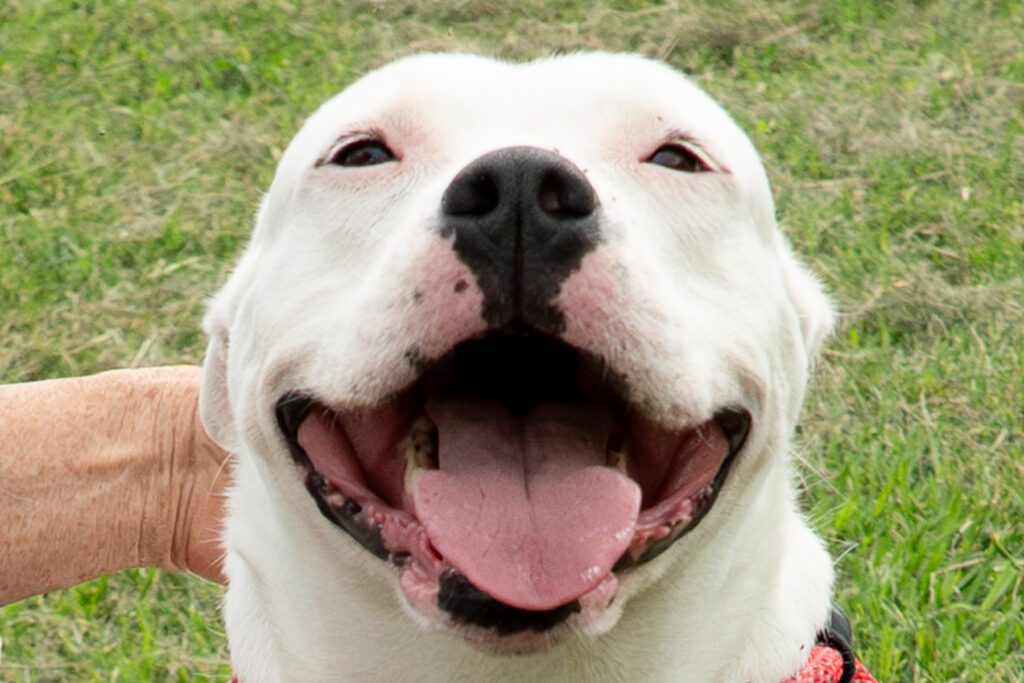Focus On: Enrichment - September 2025




Focus On: Enrichment
Providing Canine Enrichment is Easier Than You Think(by WWLDO co-founder Cara Achterberg)
As dogs linger longer and longer at shelters, enrichment becomes a critical lifesaving necessity. In the state of North Carolina, for instance, regulations require enrichment for any dog or cat who stays in the shelter over 30 days, but every shelter, rescue, and in my opinion, pet owner should be incorporating enrichment into every dog’s life.
We saw regular daily enrichment happening at each of the rescues we visited on our recent northern tour. One thing that struck me was that many were utilizing enrichment ideas that didn’t cost very much.
Take, for example, Animal Friends in Pittsburgh which has an enrichment specialist, Suzanne, on staff. There were piles of homemade snuffle mats made out of T-shirts torn into strips and a plastic dish drainer mat in her office.
Empty cereal boxes, which you could ask supporters to donate for free, turned into another enrichment tool. Toss kibble or treats inside the box and let dogs sniff them out, figure out how to reach them, and then usually rip up the box. Cardboard egg cartons were used for the same purpose.
We also always share our homemade lick mats everywhere we go. Plastic cutting boards ($4 at Walmart) are smeared with peanut butter and affixed to the outside of the kennels. Suzanne has also created enrichment bingo boards and hung them outside kennels so that volunteers can choose an activity from the ideas on the board, which were tailored for the dog in that kennel.
Enrichment ideas abound on the internet, too. There are lots on Pinterest, but you can also follow #dogenrichment on TikTok and Instagram, or search for Facebook groups/pages focused on enrichment.
It’s worth noting, though, that enrichment looks different for each dog, according to Suzanne. For some, a slow, sniff walk is engaging, but for others, time spent snuggling on a couch might be just what they need. Animal Friends has an ‘enrichment real-life room’ with couches and a TV.
Whether in a shelter or at home alone while their people work, all dogs need to have their minds engaged. Mind work tires them out much faster than exercise. Dogs are intelligent, sensitive beings, and we all need to find ways to keep their minds happy and healthy
From the Resource Guide
Training shelter dogs doesn’t only provide enrichment, it also improves the chances of those dogs finding forever homes. Following are some organizations that specialize in offering training and behavior modification methods to staff and volunteers at shelters and rescues:
- Bound Angels Shelter Rescue
The Bound Angels Shelter Rescue program provides a unique service to shelters, humane societies and rescue organizations. The program offers logical solutions and life-saving tools provided via online training, books, educational campaigns and hands-on canine behavior training and behavior assessments. Visit the organization’s website to review testimonials and get information on the programs offered via Bound Angel University. - Dogs Playing for Life
Dogs Playing for Life serves shelters by offering playgroup seminars and enrichment programs to shelter staff and volunteers. The nonprofit promotes the use of playgroups to exercise, socialize, evaluate, train and save the lives of as many dogs as possible. Visit the website for an overview of the programs offered and registration procedures. - Fear Free Shelter Program
The Fear Free Shelter Program aims to decrease stress levels for shelter animals by educating staff and volunteers. For example, after completing the Fear Free training program, staff at Moore County Animal Services, N.C., no longer allow the public to tour the kennels because it was too stressful for the dogs. Instead, they introduce the dogs to potential adopters outside the kennel environment. The Fear Free Shelter Program is free for shelter and animal welfare staff and volunteers. Shelters can register online to become Fear Free members and begin training. - From Kennels to Homes
The mission of the nonprofit From Kennels to Homes is to provide training and behavior modification to shelters and rescues for dogs that have been labeled “unadoptable” due to behavior issues. The mission of the organization includes:- Developing an education program and solutions to help dogs with behavior issues
- Educating staff about proper and safe dog introductions
- Establishing shelter dog play groups
- Training staff on how to help dogs who have been mislabeled “aggressive” due to kennel behavior
From Kennels to Homes actively seeks sponsors, enabling it to offer low-cost training assistance to shelters and rescues.
- GoodPup Shelter Partnerships and Programs Initiative
GoodPup is a virtual positive reinforcement dog training company that partners with shelters and rescues across the United States and Canada. The training company provides support to new adopters, helping set dogs up for success in their new homes. The GoodPup Shelter Partnerships and Programs initiative includes:- The GoodPup Shelter Affiliate Program – Through this program, shelter partner clients get one free week of training on the GoodPup platform, plus a lifetime discount for any additional classes. GoodPup will send donations to shelter partners for each adopter or foster caretaker who becomes a paying customer of the training company. This program is free for shelters.
- GoodPup’s Webinar Series – Shelter partners have free access to presentations and panel discussions from certified training experts that cover training, behavior and other topics relevant to shelter animals.
- The GoodPup Advantage Program – Shelter partners can offer pre-paid training scholarships to support adopters, fosters and dog owners seeking assistance with training. Scholarship recipients receive a custom training plan and have access to GoodPup’s Behavior Team when advanced support is needed. Shelters can choose from several discounted pricing options.
Visit the website for more information on how to partner with GoodPup.
- Shelter Playgroup Alliance
The mission of the Shelter Playgroup Alliance is to provide low-cost educational programs and workshops for animal shelters. The goals of the alliance include:- Empowering shelter dogs through choice
- Educating shelter staff and volunteers
- Providing enrichment opportunities that include play
The Shelter Playgroup Alliance Core Educational Program combines online and in-person programming. The alliance seeks donations from supporters to help it continue offering affordable programs to shelters. Visit the Program Registration page to review or sign up for a workshop.
In addition to training opportunities, the WWLDO Resource Guide/Shelter Programs and Enrichment Ideas page offers information on a wide variety of programs and activities that can help improve the lives of shelter dogs.What the Science Says about Enrichment
“[Environmental enrichment] could reduce the display of some undesirable behaviors, such as barking and jumping when visitors are present at the shelter (Herron et al., 2014), reduce the frequency of fights and abnormal behaviors (Mertens and Unshelm, 1996a, Hunt et al., 2022), and can decrease the intensity and frequency of depressive behavior (Sampaio et al., 2019, Cuglovici, 2023), thereby improving dog-human and dog-dog interactions.” – Journal of Veterinary Behavior, July-August 2025
Petco Love is accepting applications through September 30 for its Access to Care grants. Spay and neuter clinics, full service low-cost providers and TNR are invited to apply here.Petco Love Grant Deadline
Look for our new website and logo coming soon!
